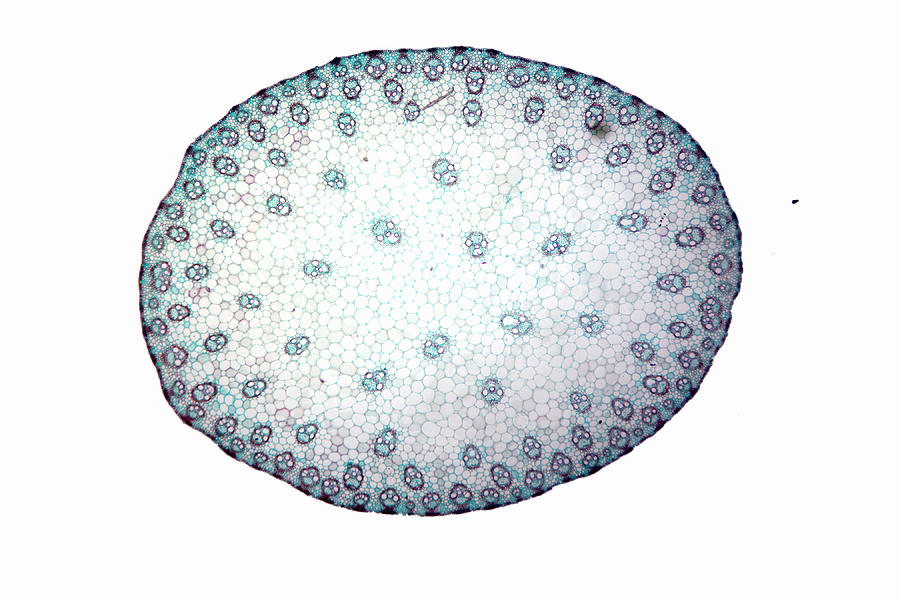
Monocot Stem Cross Section. Lm Photograph by Science Stock Photography
Monocot roots are fibrous or adventitious roots or shoot-borne roots found in monocotyledonous plants, consisting of a vast network of thin roots and root fibers originating from the stem. The number of roots varies depending on the species and age of the plant.

Monocot Root Cross Section BryannatuCaldwell
1. Monocot and dicot roots have very different appearances. Before we look at the structures and tissues inside monocot and dicot roots, let's examine how their overall shape and structure differs. Monocot roots are fibrous, meaning they form a wide network of thin roots that originate from the stem and stay close to the surface of the soil.

Internal Structure of Monocot Stem Notes Free Biology Notes Rajus
The roots allow plants to absorb water and nutrients from the soil. Monocot roots are fibrous, meaning they form a wide network of thin roots that originate from the stem and stay close to the soil surface. Dicot roots have a central "taproot," meaning they form a single thick root, with lateral branches, that grows deep into the soil.

Monocot & Dicot Root Prepared Microscope Slide 75x25mm — Eisco Labs
Root systems are mainly of two types (Figure \(\PageIndex{1}\)). Dicots have a tap root system, while monocots have a fibrous root system. A tap root system has a main root that grows down vertically, and from which many smaller lateral roots arise. Dandelions are a good example; their tap roots usually break off when trying to pull these weeds.

SOLUTION Anatomy of monocot root Studypool
Monocot Root Diagram. (4). Pericycle. Ø The layer (s) of cells occupying between the endodermis and vascular tissue is called pericycle. Ø Usually, the pericycle composed of a single layer of thin walled parenchymatous cells. Ø In Smilax, the pericycle is multiseriate and thick walled.

Preparation And Study Of T.S Of Dicot And Monocot Roots And Stems(Primary)
Monocot Roots Those plants whose seed contains only one cotyledon is known as monocot plant (or monocotyledon). In this tutorial, you will learn about the characteristics and anatomy of monocot roots. Primary Structure of Monocot roots The typical monocot roots show the following features:
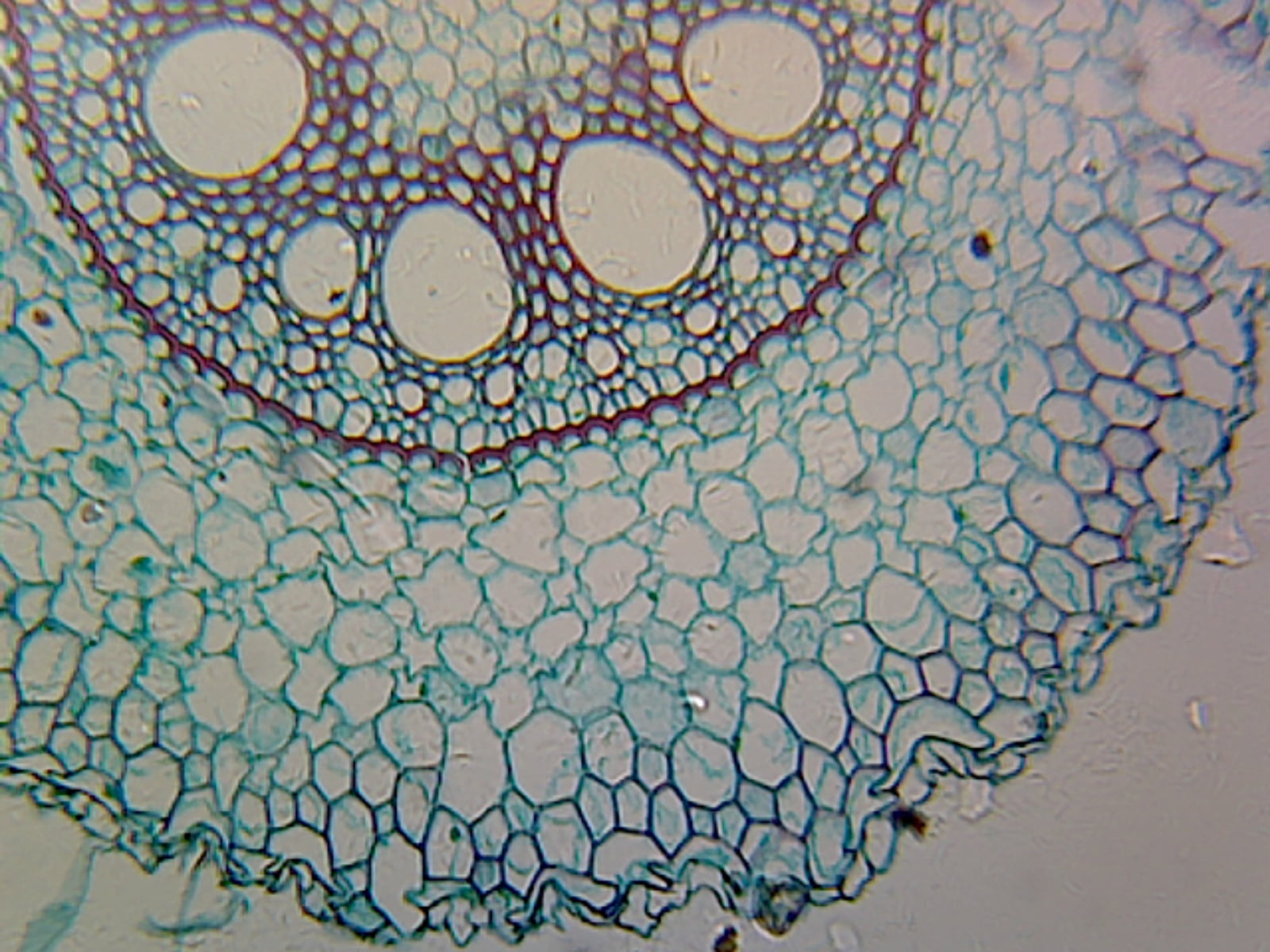
Angiosperm Root; Monocot; Showing General Structures; Cross Section
Monocots, as the name implies, are defined by having seeds that contain a single (mono-) embryonic leaf known as a cotyledon. This is a monophyletic group that constitutes a majority of our agricultural biomass and include many important crop staples including, but not limited to, rice, wheat, corn, sugar cane, bamboo, onion, and garlic.

DS001 Monocot & Dicot Roots, cs Valley Microscope
Definition of Monocot Root Definition of Dicot Root Read Also: Monocot and Dicot Leaves- Definitions, Structure, 13 Differences, Examples Structure of Monocot and Dicot Root 1. Piliferous Layer or Epiblema or Epidermis 2. Cortex 3. Endodermis 4. Pericycle 5. Vascular Bundles 6. Conjunctive tissues 7. Pith 8. Passage Cells

class on structure of monocot stem YouTube
8.4: Monocots. Monocots are a group of flowering plants that produce a single first leaf ( cotyledon) as their seeds germinate. Eudicots (frequently referred to simply as dicots) produce two cotyledons. In addition to this feature, monocots and eudicots can be distinguished by several anatomical and morphological features.
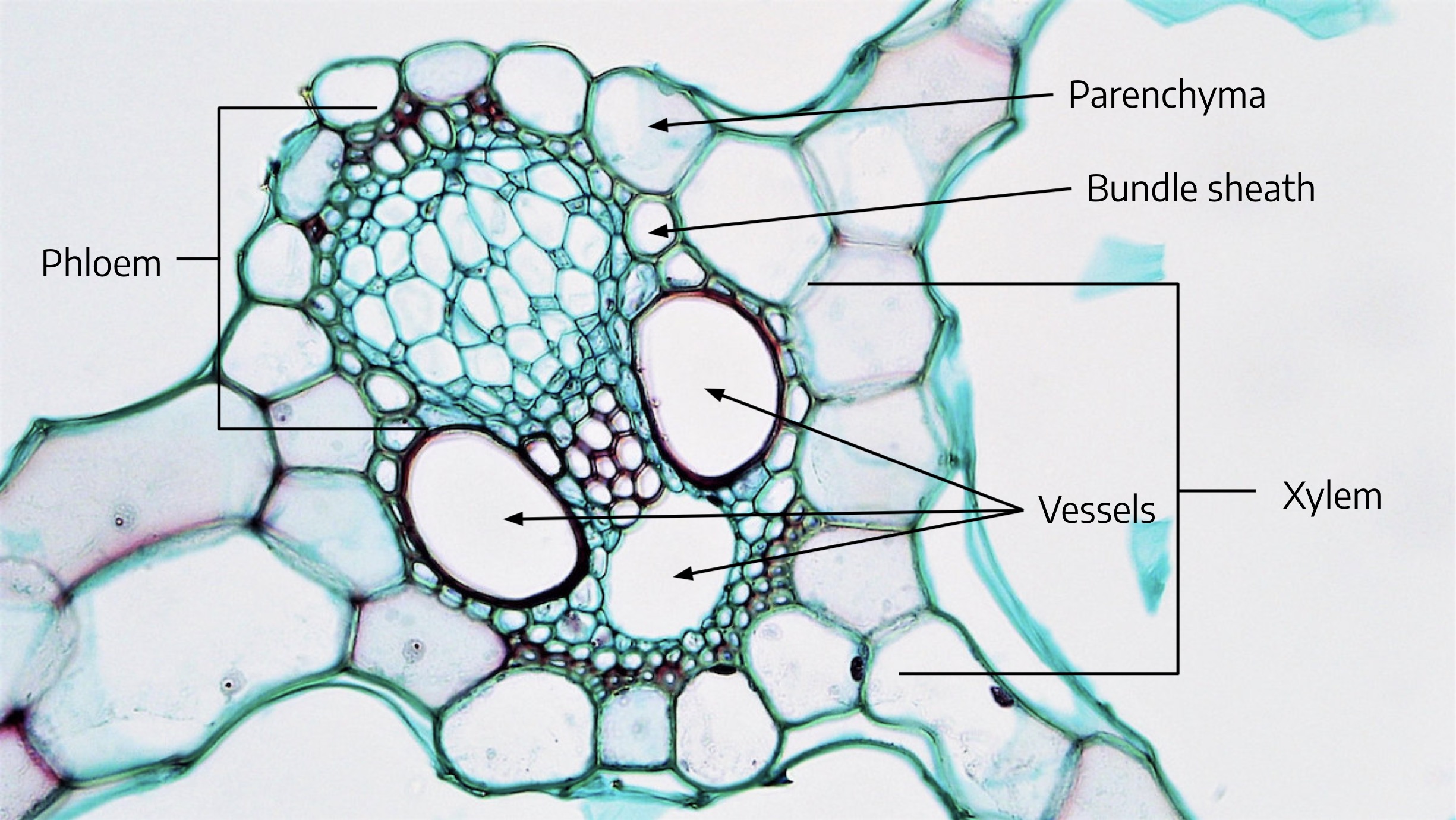
5.2 Inside Stems The Science of Plants
Monocot roots, also known as monocotyledonous roots, are a crucial part of the root system in plants belonging to the monocotyledonous group. Monocotyledonous plants, or monocots, are a class of flowering plants that have a single cotyledon or seed leaf in their embryonic stage.
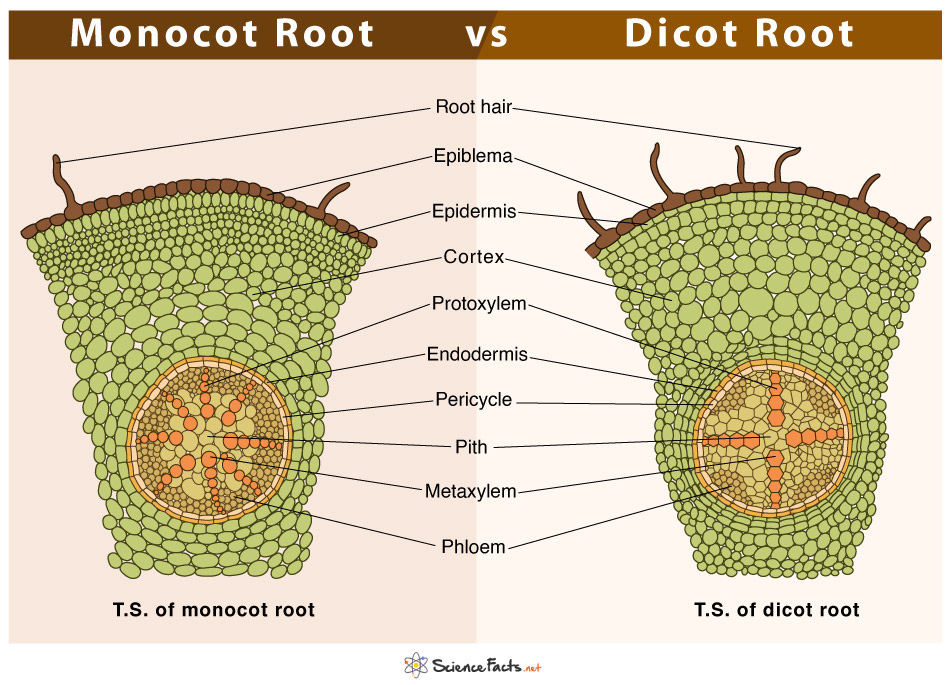
Monocot vs. Dicot Root Differences and Similarities
Category: Animals & Nature Byname: monocot Key People: Agnes Arber Related Topics: Asparagales Alismatales Pandanales Liliales Petrosaviales See all related content → monocotyledon, one of the two great groups of flowering plants, or angiosperms, the other being the eudicotyledons (eudicots).
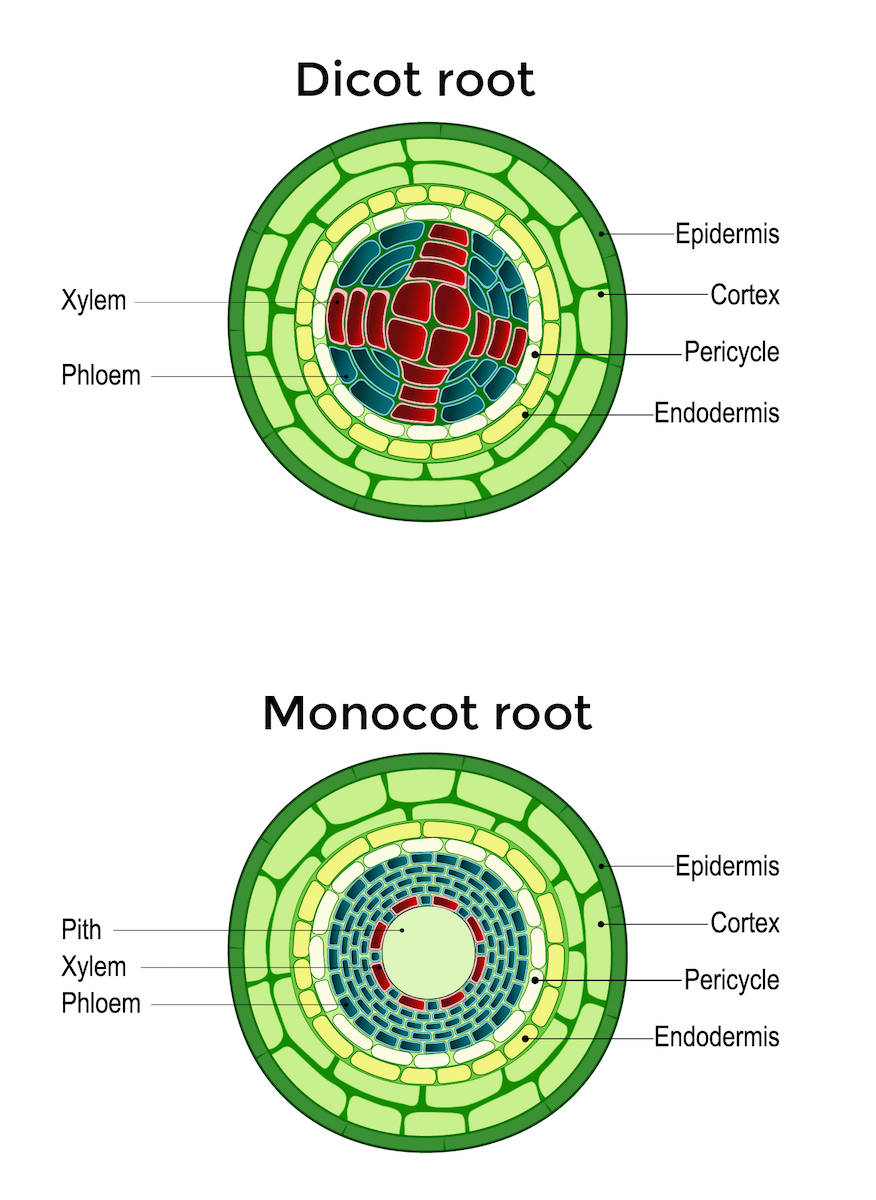
5.3 Inside Roots The Science of Plants
Roots The roots of monocots cannot grow in diameter due to the lack of vascular cambium. Instead, they grow more roots at the shoot (radicle) and send out creeping shoots called runners or rhizomes (Figure 1). The coleorhiza is a tough sheath of tissue at the end of each root that protects it as it works its way through the soil.
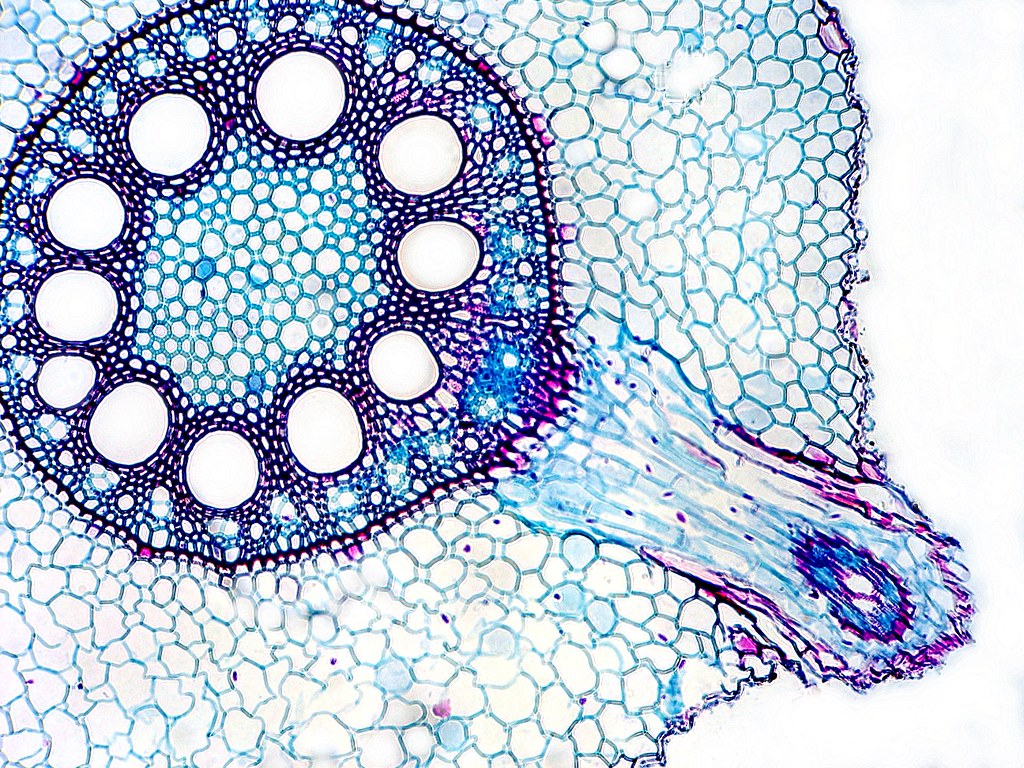
Monocot Stem Cross Section Monocot Root Cross Section Structure (with
Anatomy of Monocot Root. Monocot and Dicot Roots: Type # 1. Anatomy of Dicotyledonous Roots: I. Cicer- Root: ADVERTISEMENTS: It is circular in outline (Fig. 170) and reveals following tissues from outside with-in: Epiblema: 1. It is the outermost layer consisting of many thin-walled cells. 2. From some of its cells arise unicellular hair.
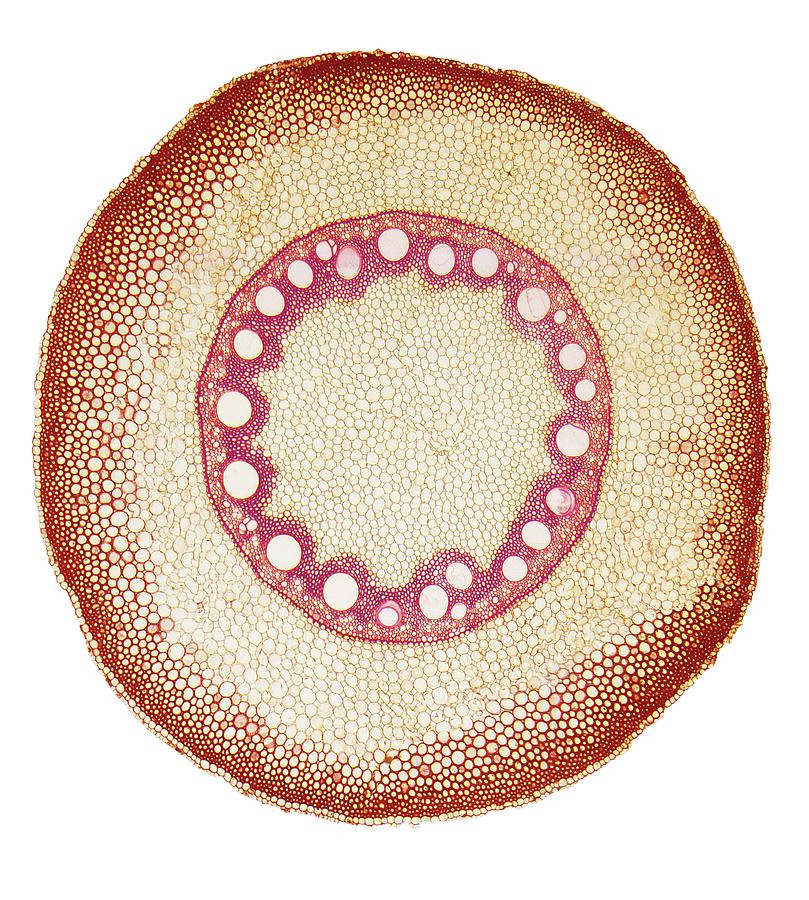
Monocot Root Vascular Arrangement Photograph by Steve Gschmeissner
Monocot Root These plant roots have a comparatively wider, and fibrous root-like structure. Dicot Root These plant roots have a comparatively narrow, and tap root-like structure. Normally, dicots and monocots differ in four aspects which include stems, flowers, leaves, and roots.

Monocot Stem Cross Section Monocot Root Cross Section Structure (with
Monocot root systems are adventitious; with dicots both primary and adventitious root systems occur. Monocot pollen has a single furrow or pore through the outer layer (monosulcate); dicot pollen is mostly with three furrows or pores. Monocots lack secondary growth leading to woody plants; dicots are not so restricted. 1.
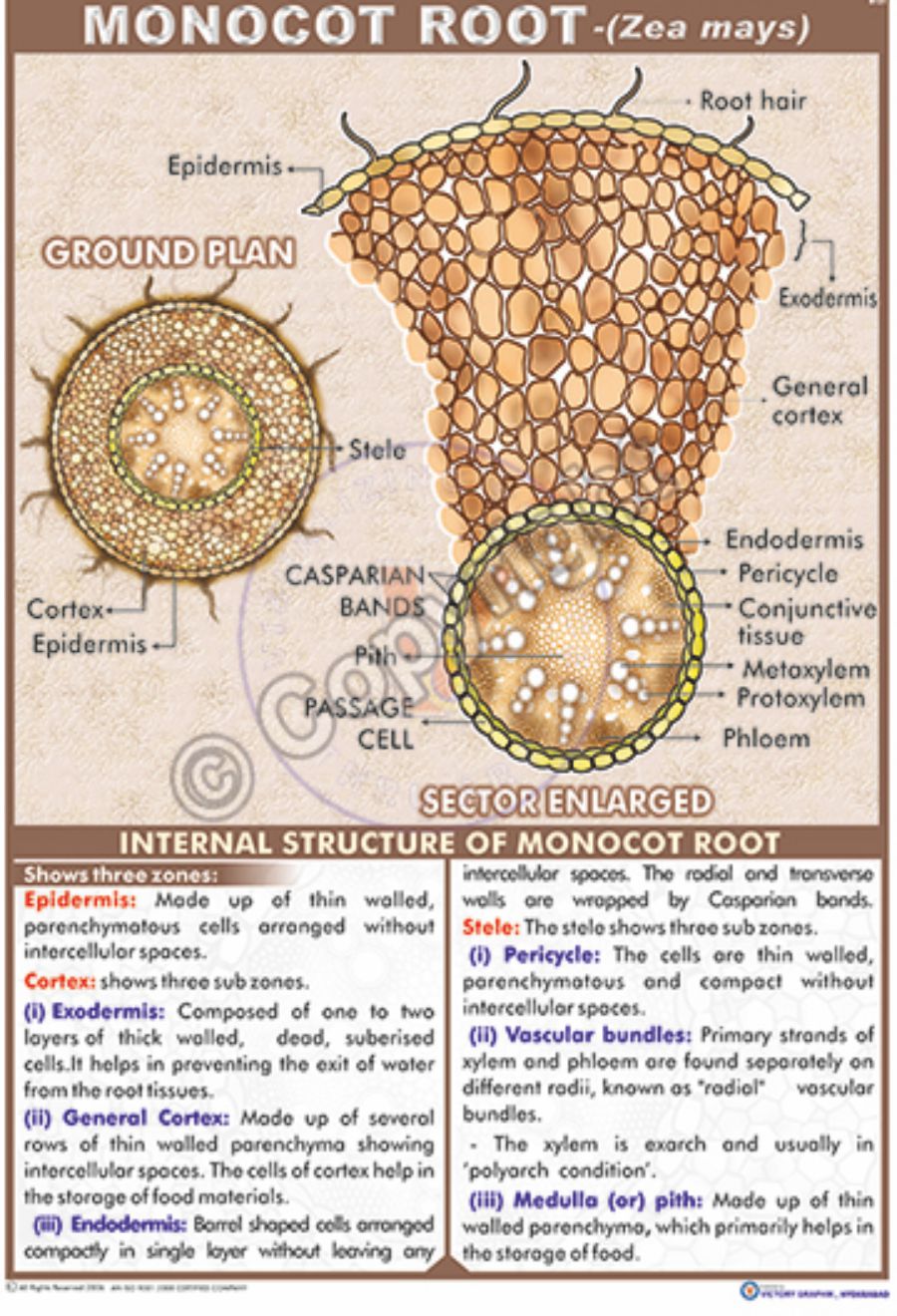
Victory Graphik B31 Monocot Root (Zea Mays)
Monocot root. Monocot roots have a fibrous structure, meaning they form a wide network of thin roots that originate from the stem and stay close to the soil surface. The ground tissue of monocot roots, primarily composed of parenchyma cells, is divided by a ring of vascular tissue into the outer cortex and central pith. See it in 3D! Epidermis